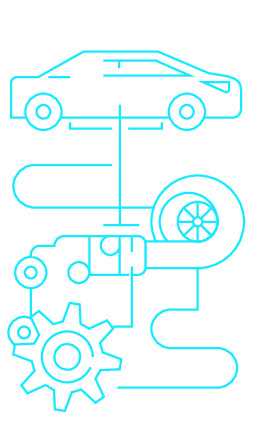|
|
|
| Module code: FT51 |
|
|
2V (2 hours per week) |
|
2 |
| Semester: 6 |
| Mandatory course: no |
Language of instruction:
German |
Assessment:
Written exam
[updated 30.09.2020]
|
FT51 (P241-0307, P241-0313) Automotive Engineering, Bachelor, ASPO 01.10.2011
, semester 6, optional course
FT51 (P241-0307, P241-0313) Automotive Engineering, Bachelor, ASPO 01.10.2015
, semester 6, optional course, course inactive since 27.07.2017
FT51 (P241-0307, P241-0313) Automotive Engineering, Bachelor, ASPO 01.04.2016
, semester 6, optional course
FT51 (P241-0307, P241-0313) Automotive Engineering, Bachelor, ASPO 01.10.2019
, semester 6, optional course
|
30 class hours (= 22.5 clock hours) over a 15-week period.
The total student study time is 60 hours (equivalent to 2 ECTS credits).
There are therefore 37.5 hours available for class preparation and follow-up work and exam preparation.
|
Recommended prerequisites (modules):
None.
|
Recommended as prerequisite for:
|
Module coordinator:
Prof. Dr.-Ing. Rüdiger Tiemann |
Lecturer:
Dipl.-Ing. Roland Ney
[updated 11.05.2019]
|
Learning outcomes:
After successfully completing this module, students will have an overview of the scope of duties of a technical expert in the context of accident analysis. They will be familiar with the basic procedure for recording and reconstructing traffic accidents. In addition, students will also be familiar with special topics such as: traffic monitoring, consequences of injuries, plausibility of vehicle damage, perceptibility of minor collisions.
[updated 30.09.2020]
|
Module content:
- Traces at the scene of the accident,
- Possibilities and procedures for securing evidence and recording accidents,
- Basics of calculating pre-crash speed, relationships between formulas and calculation examples,
- Representation of the chronological relationship between perception, reaction and delay,
- Basics, representation and interpretation possibilities of the s-t diagram
- Answering legal questions regarding the avoidability of accidents from a technical point of view (spatial and temporal avoidability),
- Introduction to the calculation methods for collision analysis and their applicability with regard to different impact constellations, verification by accident tests
- Possibilities for the reconstruction of pedestrian accidents, auxiliary variables, results from accident tests
- Overview of special topics such as: Traffic monitoring, expert opinions on injury consequences, plausibility of vehicle damage, perceptibility of minor collisions.
- Overview of the legal environment, differences between criminal and civil proceedings, appearing in court
[updated 30.09.2020]
|
Teaching methods/Media:
Lecture, practical exercises and exercises relating to the lecture, presentation with video projector, lecture notes
[updated 30.09.2020]
|
Recommended or required reading:
Self-made script
[updated 30.09.2020]
|


